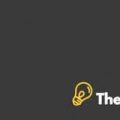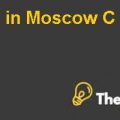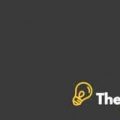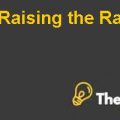Southwest Airlines Case Study Solution
This case discusses the key elements/forces, which are controlling the wheel of US Airline ships. The industry has struggled after recession and especially 11TH September. The whole incident out threw many airlines to bankruptcy. In this scenario, the case depicts the external and internal factors that are shaping the industry as well as many airline businesses.
The recommendations are provided on the basis of the competencies identified in the case, and through the acquisition of Airtan. Furthermore, the report entails in-depth analysis of the culture, its impact on business strategy and corporate strategy.
Introduction
The external forces are the environmental forces that are outside the control of the company. They help to gauge the potential of the market and the environment. The industry of US airline is analyzed on the Porter’s 5 forces model, which will help to understand the market forces which drive the US airline industry
Porter 5 forces Model
Bargaining power of Supplier
The bargaining power of supplier in the US Airline industry is very high, because of the fact that the three inputs that airlines haves in terms of fuel, aircraft and labor are all affected by the external environment. The price of aviation fuel is subjected to fluctuating global markets for oil which can rise due to geopolitical and other factors. Similarly, labor is also subjected to the strong power of union who bargains and gets unreasonable and costly concessions on wages from Airlines. Furthermore, the airlines are dependent on the two major suppliers of airplanes Airbus and Boeing for aircraft needs, because at current scenario according to the case, the air crafts are leased or given through outright sales. These are the three reasons due to which the suppliers’ power is high in Airline industry.
Bargaining power of the Buyer
The bargaining power of the buyer is also very high in Airline industry, because of the three major reasons. The initial reason is the emergence of low cost planes like JetBlue provides lowest possible fares with relatively good services. Many airlines are operating in the industry, which makes a wide pool of options/choices which affects the sales frame of airlines. Moreover, the proliferation of online ticketing and distribution centers has freed the buyers form the mercy of the agents, now they can book and choose any airline themselves by paying additional. Similarly, the tight regulations of the government to control the pricing structure has felled in the favor of the buyer.
Barriers for New Entrants
In the US, barriers for new entrants are high, the reason behind this are the strict regulations of the government, making the industry highly competitive, Similarly, the industry requires heavy investments in capital and following of extensive regulations by the government to enter in the market, which every business cannot afford. Moreover, airline industry requires specialized knowledge and skill to start and then sustaining the business, which again is complex for new entrants. On the other hand, the airline industry also leverages the efficiencies and synergies from economies of scale and hence the barriers are very high. By applying the Porter’s model, we have analyzed that airlines pose significant entry and exit barriers.
Threat of Rivalry
As mentioned in the case, the airline industry of the US is exposed to extreme competition because of strict regulation and policies of the government, low cost carriers which become an element of rising cost of operations. Apart from these reasons, the major driver of rivalry is from the supplier side, as the market is regulated more by suppliers than the demand side which directs the direction that the companies have no hold over the market they choose and the price they set, all is governed by the suppliers and the government. Due to these facts, the market is extremely competitive, which makes the extent of rivalry very high.
Southwest Airlines Harvard Case Solution & Analysis
Threat of Substitution
The threat of substitution is relatively low, because in US the traveler who travel by airline dose not takes railways and other means to travel, thus the industry is relatively low in terms of substitution. In fact, the travelers focus more on complementary items provided by airline services that the substitutes. Thus, the substitution does not affect the airline industry of the US.
Through this analysis, the companies operating in the industry shall take measures to deal with the extend of rivalry, which may tighten the boundaries even more in future, as a result, making the stability of the companies questionable. Moreover, the companies in the industries shall take serious notice of the force of the suppliers; as they need to develop such strategies that can ensure the survival of the business even if the two big suppliers stop working with the business....................
This is just a sample partial case solution. Please place the order on the website to order your own originally done case solution.













